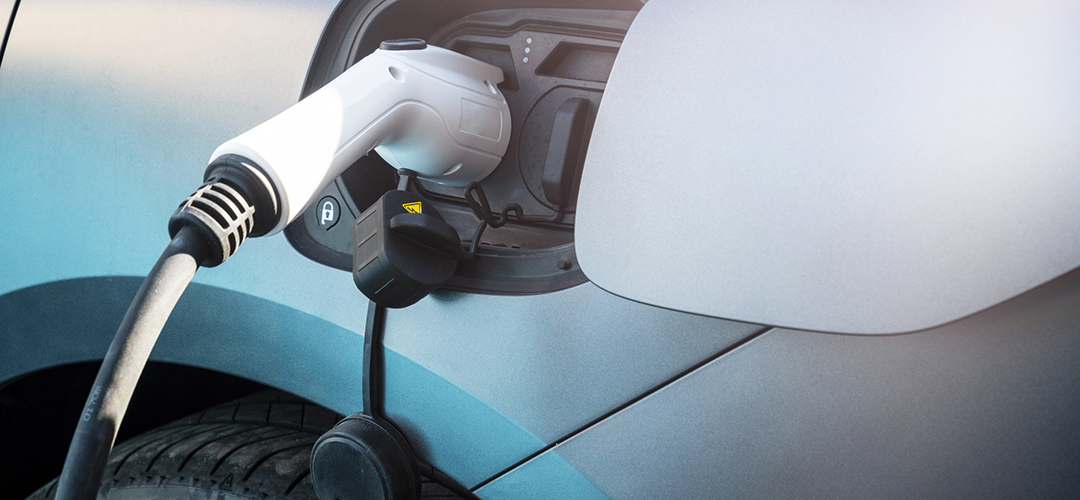In an era of increasing environmental awareness and rising fuel prices, the automotive industry is witnessing a significant shift towards more sustainable and energy-efficient solutions.
Among the most promising innovations are Hybrid Electric Vehicles (HEVs), which offer a blend of conventional internal combustion engines (ICE) and electric propulsion systems.
These vehicles provide a compelling solution to reducing carbon emissions, improving fuel efficiency, and lowering dependency on fossil fuels.
In this blog post, we will explore the benefits, technology, types, future trends of Hybrid Electric Vehicles (HEVs), and how all of this is connected to life cycle assessment.
What are Hybrid Electric Vehicles (HEVs)

Source: afdc.energy.gov
Hybrid Electric Vehicles (HEVs) are vehicles that combine an internal combustion engine (ICE) with one or more electric motors. The goal of this combination is to achieve better fuel efficiency, reduce emissions, and enhance overall performance.
Unlike conventional vehicles, which rely solely on gasoline or diesel engines, HEVs use both an electric motor and a gasoline or diesel engine to power the vehicle. This dual powertrain enables the vehicle to optimize fuel consumption and minimize the environmental impact.
HEVs are distinct from other electric vehicle types like Plug-in Hybrid Electric Vehicles (PHEVs) and Battery Electric Vehicles (BEVs). While PHEVs and BEVs rely more heavily on electric power, HEVs have an engine that alternates between gasoline and electric power, depending on the driving conditions.
How does Hybrid Electric Vehicles work
Hybrid Electric Vehicles work by utilizing both the internal combustion engine (ICE) and an electric motor to propel the vehicle. The integration of these two power sources enables HEVs to optimize fuel usage, increase efficiency, and reduce emissions.
Here’s how they work in more detail:
Electric motor
The electric motor in an HEV is powered by a high-voltage battery pack. When the vehicle is moving at low speeds or idling, the electric motor takes over, providing power to the wheels.
This allows the vehicle to travel short distances on electricity alone, reducing fuel consumption and emissions.
Internal Combustion Engine (ICE)
The gasoline or diesel engine is used when higher speeds or more power are required, such as during acceleration or highway driving. The engine and electric motor work together to provide a smooth and efficient driving experience.
Regenerative braking
One of the most notable features of HEVs is regenerative braking. When the driver applies the brakes, the electric motor works in reverse to generate electricity, which is then stored in the battery. This process helps recharge the battery without the need for an external charging source.
Battery management
The battery in an HEV is designed to charge and discharge based on driving conditions. It is recharged through regenerative braking and the engine, ensuring that the vehicle always has enough power to operate efficiently.
Types of Hybrid Electric Vehicles
There are several types of Hybrid Electric Vehicles, each with different configurations and advantages. The most common types include:
Full Hybrids (FHEVs)
Full hybrids can operate on either the internal combustion engine (ICE), the electric motor, or a combination of both. These vehicles automatically switch between the two power sources depending on driving conditions. Popular examples of full hybrids include the Toyota Prius and the Honda Insight.
Mild Hybrids (MHEVs)
Mild hybrids use the electric motor to assist the internal combustion engine, but they cannot drive solely on electric power. The electric motor primarily helps during acceleration and provides additional power to improve fuel efficiency. Mild hybrids are typically more affordable than full hybrids. Examples include the Chevrolet Malibu Hybrid and the Ford F-150 PowerBoost Hybrid.
Plug-in Hybrids (PHEVs)
While not strictly traditional HEVs, plug-in hybrids are worth mentioning here. PHEVs can be charged via an external power source, allowing them to drive longer distances using only electric power. Once the electric range is depleted, the vehicle switches to gasoline power. PHEVs offer more flexibility in terms of electric-only driving. Examples include the Toyota Prius Prime and the Ford Escape Plug-in Hybrid.
Benefits of Hybrid Electric Vehicles
Hybrid Electric Vehicles offer a wide range of advantages, making them an appealing choice for environmentally conscious consumers and businesses alike.
Let’s explore some of the key benefits:
Improved fuel efficiency
One of the most significant benefits of HEVs is their enhanced fuel efficiency. By using both an electric motor and a gasoline engine, these vehicles can reduce fuel consumption by optimizing the use of both power sources. This results in fewer visits to the gas station and lower overall fuel costs.
Reduced carbon emissions
HEVs are more environmentally friendly than traditional internal combustion engine vehicles. The combination of electric power and fuel efficiency reduces greenhouse gas emissions, helping to combat climate change and reduce air pollution. This makes HEVs a more sustainable transportation option.
Lower operating costs
With improved fuel efficiency and lower maintenance needs, HEVs typically have lower operating costs than traditional vehicles. For instance, the regenerative braking system in HEVs reduces brake wear, leading to longer-lasting brake components.
Tax incentives and rebates
In many countries, including the United States, hybrid electric vehicles are eligible for various tax incentives and rebates. These financial benefits help offset the higher upfront cost of hybrid vehicles, making them more affordable for consumers.
Energy independence
HEVs reduce dependency on fossil fuels by using electric power in addition to gasoline. This contributes to greater energy independence and reduces the reliance on oil imports.
Challenges of Hybrid Electric Vehicles
While hybrid electric vehicles offer numerous benefits, there are also some challenges associated with their adoption and use:
Higher upfront costs
The technology used in HEVs, such as the electric motor and battery, can increase the initial purchase price compared to conventional vehicles. However, the savings in fuel costs and potential tax incentives can offset this higher upfront cost over time.
Battery replacement
Over time, the battery in an HEV may degrade, reducing its efficiency and range. Replacing the battery can be expensive, although many manufacturers offer warranties on hybrid batteries for up to 8 years or more.
Limited electric range
Unlike Plug-in Hybrid Electric Vehicles (PHEVs), traditional HEVs have a limited electric range. While the electric motor helps with fuel efficiency, it cannot power the vehicle for long distances on its own, limiting the vehicle’s electric-only capabilities.
Complexity of the powertrain
The dual powertrain system in HEVs can make them more complex than traditional vehicles. This can lead to higher maintenance costs in some cases, although modern HEVs are designed to minimize these challenges.
The future of Hybrid Electric Vehicles
The future of Hybrid Electric Vehicles looks promising, with several key trends shaping the market:
Advancements in battery technology
As battery technology continues to improve, the efficiency, range, and affordability of HEVs will also increase. Manufacturers are investing heavily in research and development to create longer-lasting and more efficient batteries.
Government regulations and incentives
Governments around the world are introducing stricter emission regulations and offering incentives for eco-friendly vehicles, further driving the adoption of HEVs. These policies are expected to continue supporting the growth of hybrid vehicles.
Integration with smart technologies
Hybrid Electric Vehicles are increasingly being integrated with smart technologies, such as autonomous driving features, connected car systems, and advanced safety features. These innovations will further enhance the appeal of HEVs to tech-savvy consumers.
Expansion of hybrid offerings
As the demand for eco-friendly transportation grows, more automakers are expected to offer hybrid versions of their vehicles. This will provide consumers with a broader range of options across different vehicle segments, from compact cars to SUVs and trucks.
Hybrid Electric Vehicles & Life Cycle Assessment
The synergy between Life Cycle Assessments (LCA) and Hybrid Electric Vehicles (HEVs) lies in their shared goal of promoting sustainability.
LCA evaluates the environmental impacts of products throughout their life cycle, from raw material extraction to disposal. By applying LCA to HEVs, manufacturers and consumers can understand the full environmental footprint, including energy consumption, emissions, and resource use. This analysis helps optimize HEV designs, reduce their carbon footprint, and improve sustainability.
Ultimately, combining LCA with HEVs encourages informed decision-making, leading to greener, more efficient transportation solutions and contributing to the broader goals of reducing environmental impacts.
Unquestionably, Hybrid Electric Vehicles (HEVs) represent a key innovation in the evolution of sustainable transportation.
With their ability to combine the power of an internal combustion engine with the efficiency of an electric motor, HEVs offer significant benefits in terms of fuel efficiency, reduced emissions, and lower operating costs.
While there are challenges to overcome, such as higher upfront costs and limited electric range, the future of HEVs looks promising.
With ongoing advancements in battery technology and government incentives supporting their adoption, Hybrid Electric Vehicles are poised to play a significant role in reducing the environmental impact of transportation and moving us closer to a more sustainable future.




